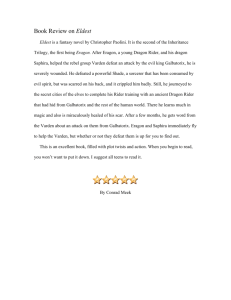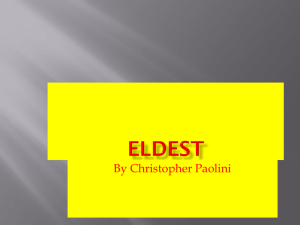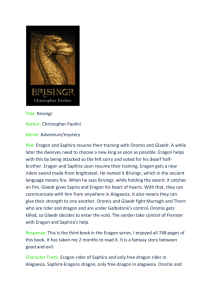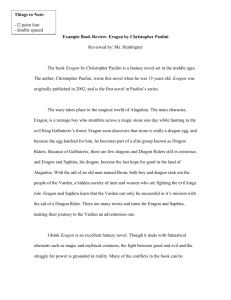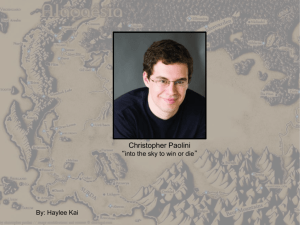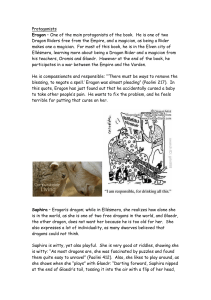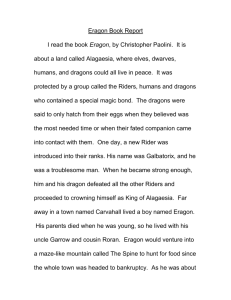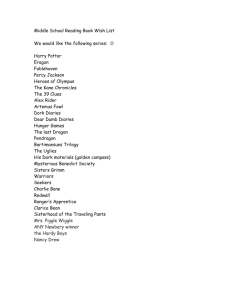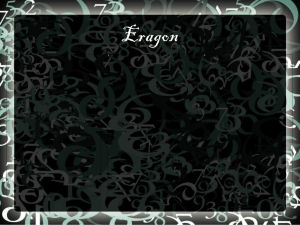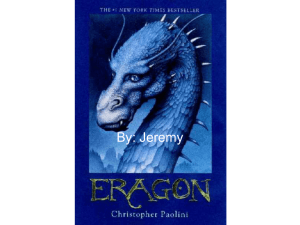4 KATERINA HELIOTI, Book Review, 2013
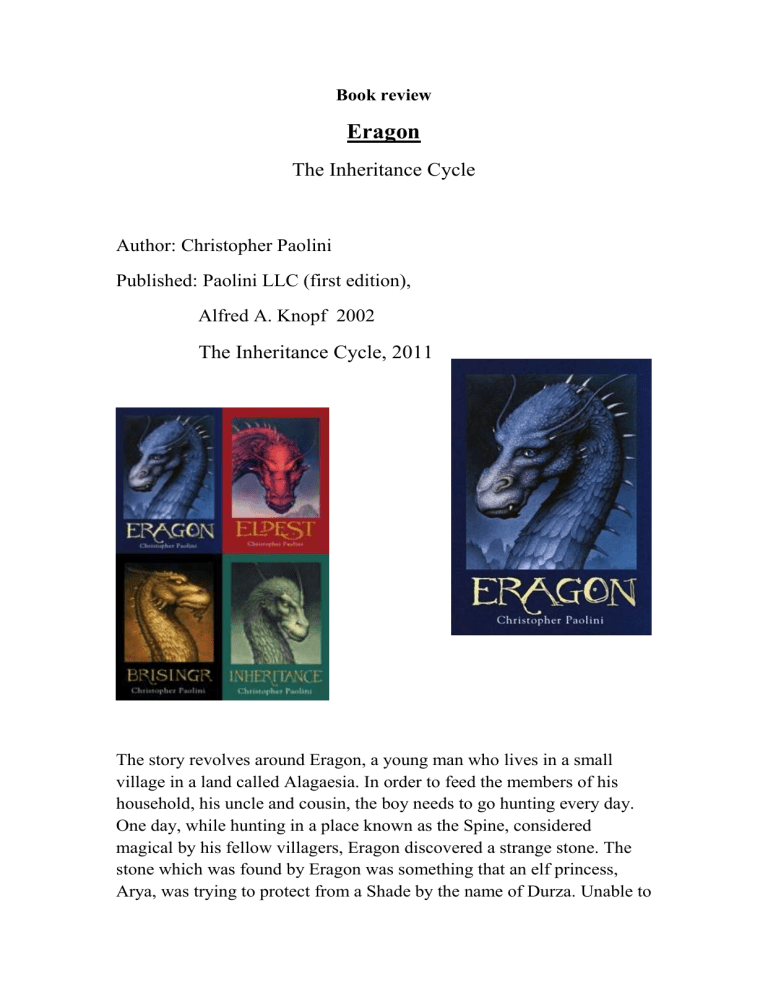
Book review
Eragon
The Inheritance Cycle
Author: Christopher Paolini
Published: Paolini LLC (first edition),
Alfred A. Knopf 2002
The Inheritance Cycle, 2011
The story revolves around Eragon, a young man who lives in a small village in a land called Alagaesia. In order to feed the members of his household, his uncle and cousin, the boy needs to go hunting every day.
One day, while hunting in a place known as the Spine, considered magical by his fellow villagers, Eragon discovered a strange stone. The stone which was found by Eragon was something that an elf princess,
Arya, was trying to protect from a Shade by the name of Durza. Unable to
sell it to any trader, he kept it all the way till when he was woken up by loud and strange sounds at night, only to find that the stone was actually a dragon egg.
Now possessing a dragon, who he decided to call Saphira, Eragon became a Dragon Rider. However, the land of Alagaesia was at the time governed by an evil traitorous Dragon Rider named Galbatorix, who in the past had destroyed the entire Dragon Rider order. Galbatorix sent two of his men to look for the egg in Eragon’s village. Though Eragon and
Saphira barely escaped by hiding in the Spine, the two followers of
Galbatorix burned down the boy’s home and killed his cousin and uncle.
Eragon was then faced with the dilemma of either siding with Galbatorix, thus surrendering, or trying to resist his forces. Along with the village’s storyteller (quite a mysterious person) known as Brom and the dragon
Saphira, Eragon sets out to have his vengeance and fight Galbatorix.
This book obviously belongs to the fantasy genre, since it is related to dragons, knight orders, elves and dwarves. Its author, Christopher Paolini,
15 years old at the time of the composition of this work, was profoundly inspired by well-known authors like J.R.R Tolkien ( The Lord of the
Rings ), Philip Pullman ( His Dark Materials) and many others.
First of all, we must begin by saying that such a novel is quite impressive for a young man. Since Paolini tried to mimic his role model authors and their mastery of linguistics, his use of language in the book is quite meticulous and careful. The story, given the nature of the novel, develops pretty smoothly, though a reader may get occasionally confused and have to go back a few pages in order to understand what is happening at a given point. The book, overall, is rather ‘mature,’ considering Paolini’s experience in the field at his age.
However, the book itself is nothing special. An ordinary fantasy story, dealing with a boy who, finding a dragon by absolute chance, becomes a mighty Dragon Rider and fights the evil tyrant of the land of Alagaesia.
The main characters rarely die, and the enemies, Galbatorix and Durza, are as usual undefeatable and it takes the entire Inheritance cycle to eliminate them. The characters themselves are uninteresting, with Eragon evolving to become very powerful (he is the main hero after all), Arya
being the weak but very important link in the story which the hero has to save, and various other powerful allies such as Angela who assist Eragon.
Even though Paolini did his best when it comes to language, his linguistic expertise doesn’t outsmart that of Tolkien’s, who created words himself and spent time contemplating on the right word to use; neither does it resemble Pullman’s light, but epic-sounding, language. In terms of style, the book is an epic fantasy and the language is made to suit this genre simply adequately.
Generally, I believe that although the book is not absolutely disappointing for a fantasy novel, it is quite ordinary and it can get boring, since nothing unpredictable (such as the main hero dying… should the end be revealed?
) really happens. Nevertheless, I wouldn’t entirely dissuade readers from buying it, because for your average epic fantasy novel, it is good enough.
Helioti Katerina, A4, 2013
